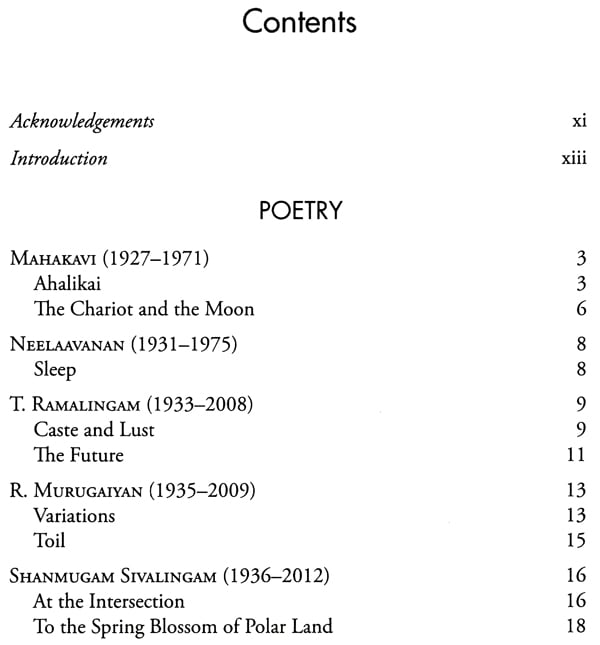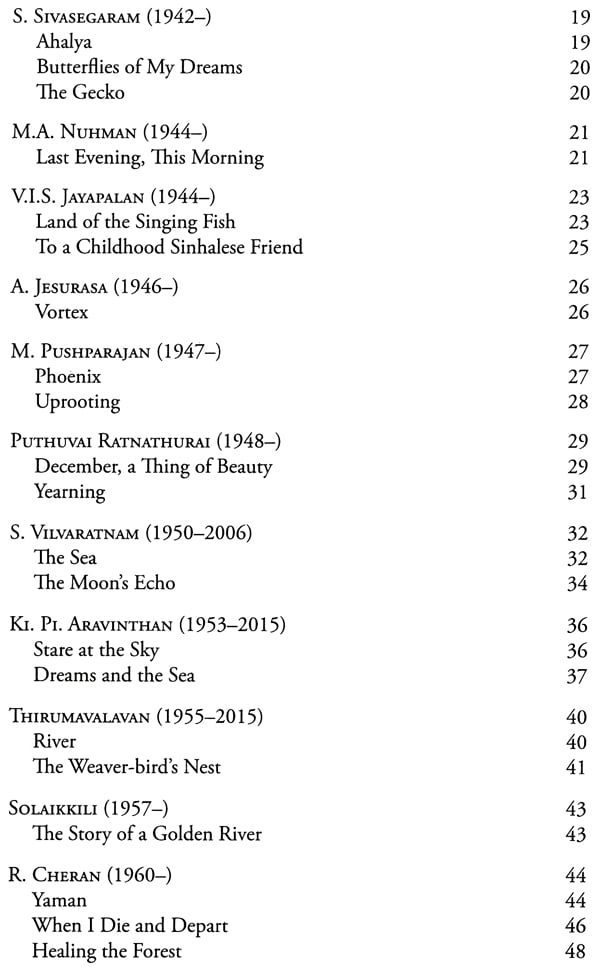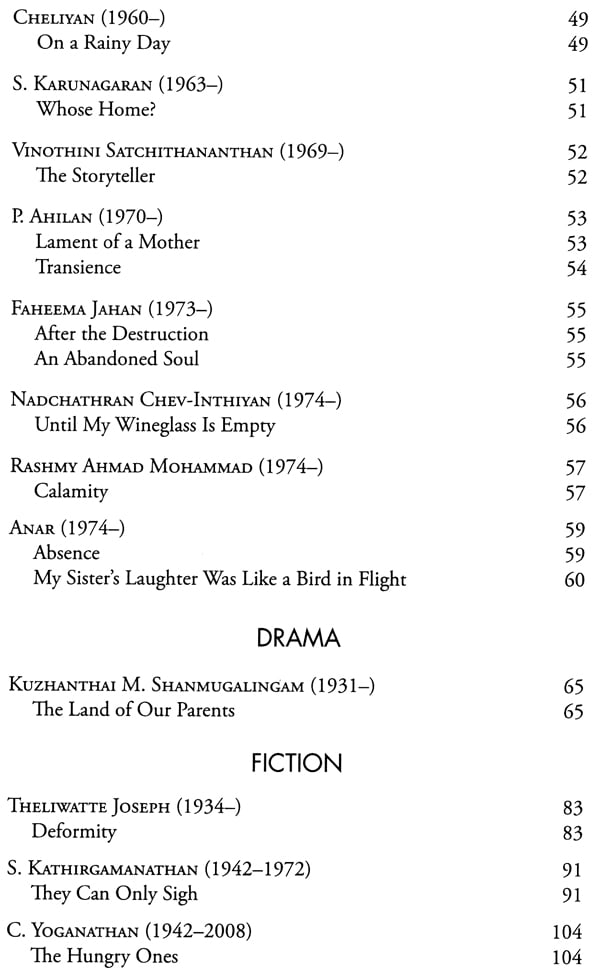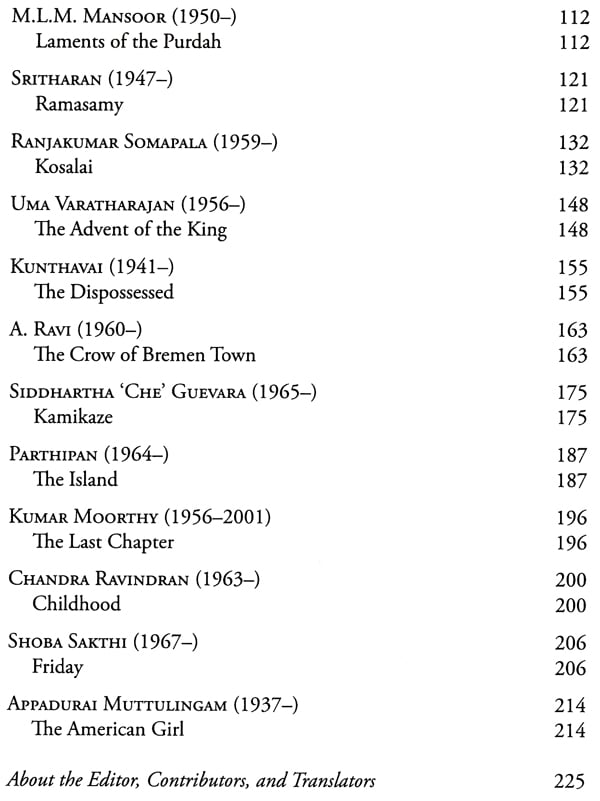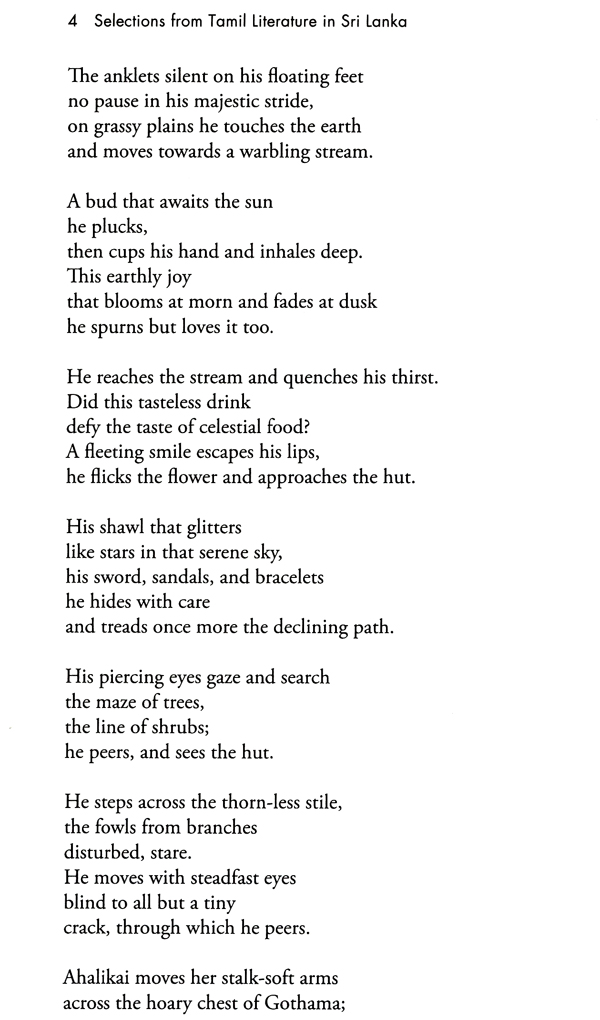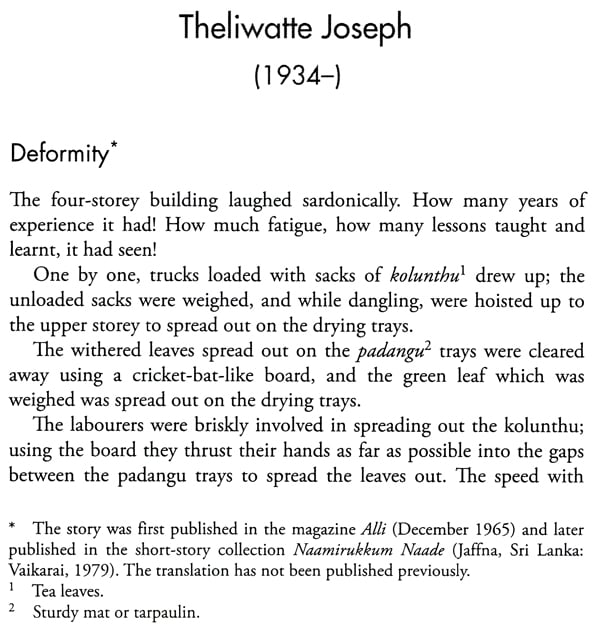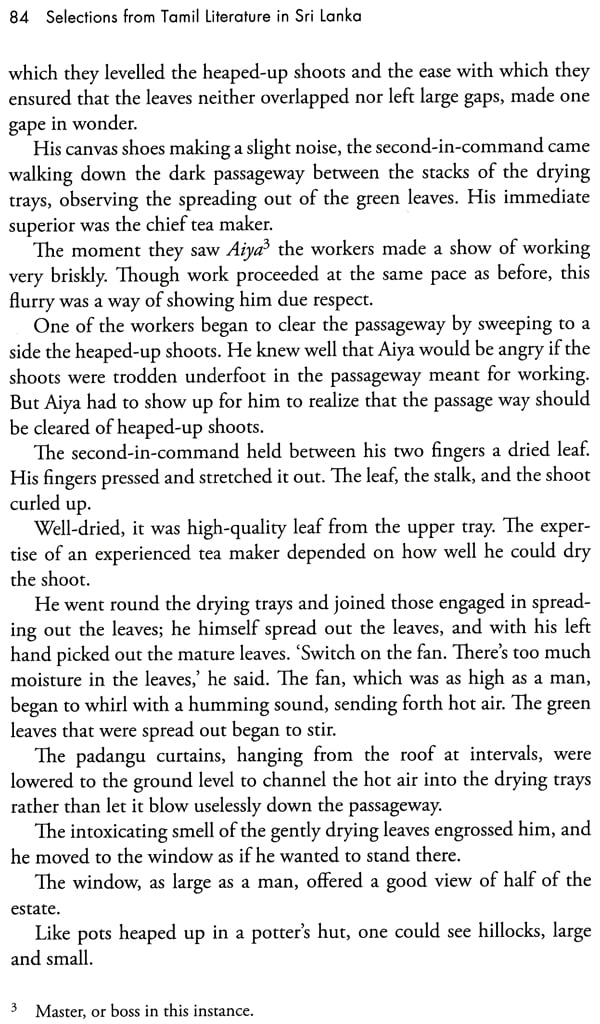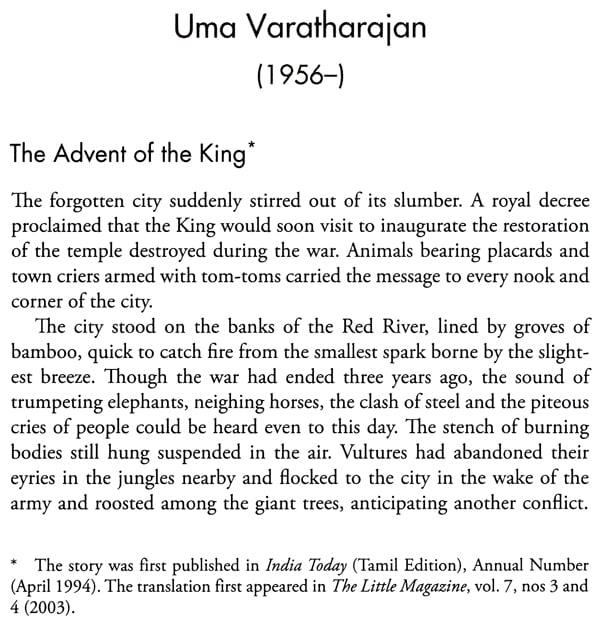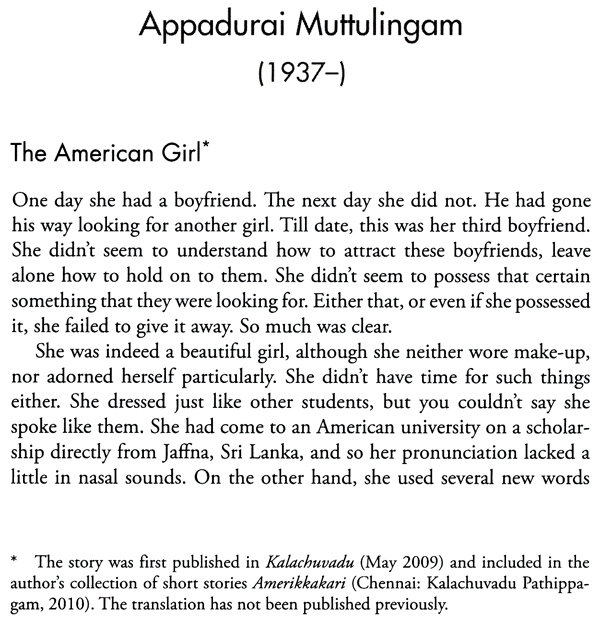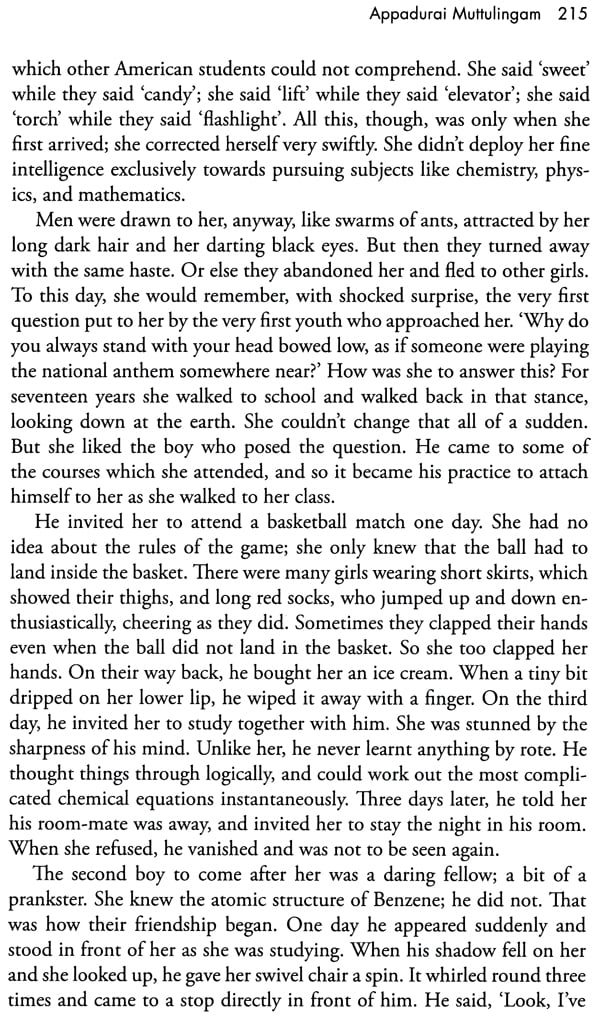
Uprooting the Pumpkin (Selection from Tamil Literature in Sri Lanka)
Book Specification
| Item Code: | NAS046 |
| Author: | Chelva Kanaganayakam |
| Publisher: | Oxford University Press |
| Language: | English |
| Edition: | 2016 |
| ISBN: | 9780199464678 |
| Pages: | 264 |
| Cover: | PAPERBACK |
| Other Details | 8.50 X 5.50 inch |
| Weight | 270 gm |
Book Description
Chelva Kanganayakam (1952-2014) was professor in the department of English, at the University of Toronto, Canada, and a distinguished scholar of postcolonial literature and south Asian studies. He was a Fellow of the Royal society of Canada and was one of the leading translators of Tamil poetry and fiction into English.
Where is my harbor?
Where is the pillow I will not have to pay for,
and the window I can look from that frames my life?
-Derek Walcott, Star-Apple Kingdom, p. 8
The poem titled Ahalikai', with which the present anthology begins, was written by Mahakavi-a sobriquet for T. Rudhramoorthy-whose poetry, together with that of a few others including R. Murugaiyan and Neelaavanan, marks what one might call a post-Independence renaissance in Tamil writing from Sri Lanka. To make this claim is not to be overly celebratory about the present or dismissive about a long and distinguished literary history in Sri Lanka. In fact, it is claimed that the poetry of a Tamil poet from Sri Lanka was included in an anthology of Sangam poetry almost 2,000 years ago. While it is hardly possible to trace a continuous literary history from that period, we are able to construct, starting in the fifteenth century, for 500 years, an uninterrupted literary tradition, moving through diverse phases and embracing a range of literary forms and genres. This corpus constitutes a rich tradition of literature, as important for the scholar as it is for the casual reader. It is, however, the moment of decolonization-the 1940s and 1950s-that appears to have heralded a radical transformation of literature in both content and form.
Even a cursory look at the hundreds of volumes published during the last 60 years serves as a reminder that any easy generalization of its contours is likely to be a simplification. From various parts of Sri Lanka and the diaspora, poetry, fiction, and drama-not to mention essays, memoirs, and biographies-have flourished, and these demonstrate that preparing a comprehensive literary history of this period is a daunting task. The critical essays and books that have been written in Tamil during the past three decades are substantial and valuable in that they point to trends, recurring themes, and changes in sensibility, but they do not always provide a holistic view of how and why this period was strikingly different from the past. What we do know, however, is that this period marks a phase of spectacular achievement.
For readers whose only way of accessing this rich and varied material is through translations, the task of appraisal is even more difficult. Over the last six decades, only two collections of translations have been dedicated exclusively to Tamil literature from Sri Lanka. The first, titled Tamil Eelam Literature, appeared in 1996, and the second, titled Lutesong and Lament: Tamil Writing in Sri Lanka, was published in 2001. In some ways both are eclectic and somewhat dated, although they remain significant contributions. The absence of translations and the paucity of competent translators have been major impediments. These pioneering publications, however, together with translations that have appeared in journals and broad-based anthologies, pave the way for collections such as the present one. This anthology, too, makes no claim to be comprehensive, but makes an attempt to preserve a chronological perspective while focusing on distinctive contributions. The primary focus is on aesthetic merit, although such classifications are inherently problematic. Terms such as 'distinctive' and 'unique' are often both misleading and subjective, and what is spectacular for one might well be mediocre to another. Pure art and applied art belong to very different worlds, and there is no easy way of gauging their importance, particularly in times of political unrest. At some level, however, choices are made on the basis of consensus and on the availability of good translations. I am, however, hopeful, that if at some point a 'canon' of Sri Lankan Tamil literatures were to be established, these authors would not be left out.
Compiling a collection of literary works in Tamil that follows the arc of literary history and putting together a representative collection of translations are, in some ways, very different projects. An anthology in Tamil presupposes a particular kind of reader, one who is familiar with authors and texts and would expect to see a particular structure. While canons are never entirely static, anthologies are generally prone to work with classifications that have been established by scholars and critics. With translations, the crucial difference lies in readership. For the reader who is unfamiliar with Tamil literature, the collection must be both representative and exciting. The reader is less likely to be interested in an author who has appeared elsewhere, or whose work lacks contemporary relevance. A collection that is seen as dated is not likely to appeal to an outside reader. A balance between the two, in this instance, has been a challenge. This anthology does not include those who have been published elsewhere, or whose work would interest a Tamil reader, but one whose sense of context is different. The objective of the present anthology is to present some of the exciting works that have appeared in the recent past, while keeping in mind the importance of literary history. The two poems by Mahakavi in this collection intersect in many ways, and are also strikingly different. Ahalikai' is about a myth from the Ramayana that tells the story of the god Indra and his lust for Aha-likai, the wife of the sage Gothama; thus the poem is about gods and humans, about virtue and vice, and about the complex relation between sexuality and asceticism. For Mahakavi, retelling this story provides the opportunity to delve into the psychological, deflect attention from conventional morality to choice and free will. The myth lends itself very easily and naturally to speculations about gender and patriarchy, but that had to wait for several decades until S. Sivasegaram rewrote the myth in free verse, with astounding power. That poem, Ahalyd, too, finds inclusion in this collection. Using myth and legend as a way of commenting on the present has been a persistent trait, and S. Vilvarat-nam's later poem 'The Moon's Echo' is a well-known example of how the story of the king Pari, who is besieged and defeated by three kings, is re-told, not to revisit the story of the king but his two daughters who were left destitute.
The second poem by Mahakavi, 'The Chariot and the Moon', is more topical in that it draws attention to the problem of caste in a predominantly casteist society. The voices that echo in the poem are reminders of the oppressive presence of caste and its complex relation to religion and ritual. The poems appeal to us not because they have a new vision to offer, but because the language is refreshingly familiar and formal at the same time. The majesty of the diction, particularly in Ahalikai', separates the poem from the language of everyday use, and yet the language is charmingly simple. The second poem goes further and employs multiple voices, and the language of conversation resounds more strongly than the poetic voice. The use of a heightened form of conversational language is a necessary aspect of the thematic preoccupation of the work, since the poem deals with the contentious issue of caste and the restrictions placed on the so-called untouchables. While the first poem asserts the autonomy of art, the second gestures towards its social function and stresses the importance of shaping language to reflect new concerns.
These two aspects-a preoccupation with language and art and a concern for social issues-are not fortuitous. They were a sign of the times, of the tumultuous years before and after Independence when the notion of Tamil identity was being reassessed in very different ways. The struggle for political freedom from the British does not appear to have interested Tamil writers to any great degree. While there are sporadic references to colonialism and the need for freedom, for the most part, writers of this period did not concern themselves with this motif. But they were conscious of rapid changes in social and cultural life. Modernity as a phenomenon did not emerge suddenly among Tamils, but this was a period when there was a greater degree of self-awareness about the changes that were taking place. For more than a decade, several newspapers, including Eezhakesari, Virakesari, and Thinakaran, have been in existence and have not only enabled a wide dissemination of ideas, but also provided an opportunity for writers to publish their work with a specific audience in mind. To use Benedict Anderson's felicitous phrase, an 'imagined community' was coming into being, and it clearly impacted the production of literature in significant ways. The burgeoning of readership has to be seen together with an educational system, particularly at the tertiary level, now operating with Western models, and in the process inculcating ideas that were progressive and critical of cultural practices. Many of the scholars of this time, including K. Kailasapathy and K. Sivathamby, were beginning to change the way students and writers thought about a number of issues, including class, caste, religion, and politics.
**Contents and Sample Pages**
